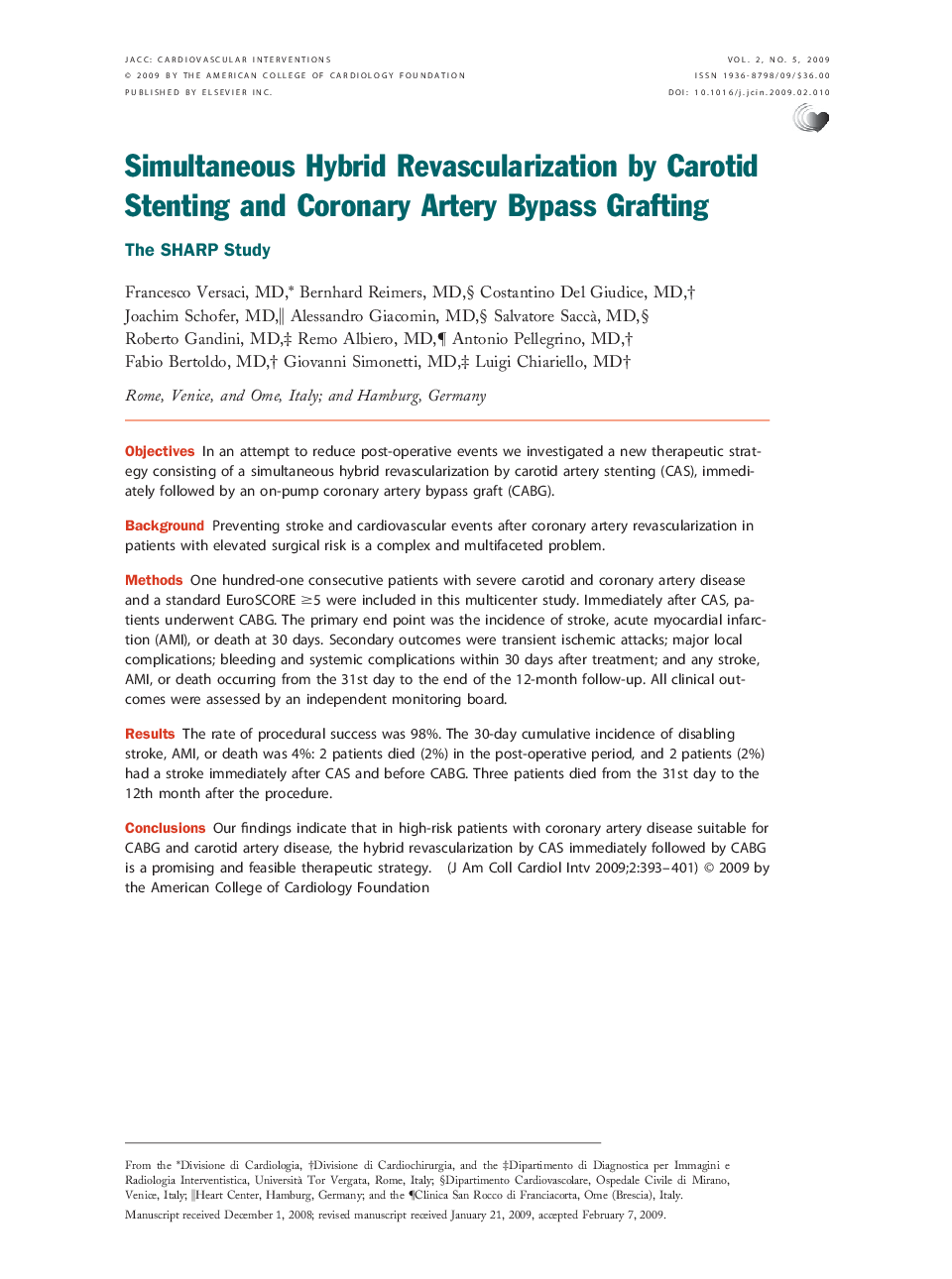| Article ID | Journal | Published Year | Pages | File Type |
|---|---|---|---|---|
| 2942097 | JACC: Cardiovascular Interventions | 2009 | 9 Pages |
ObjectivesIn an attempt to reduce post-operative events we investigated a new therapeutic strategy consisting of a simultaneous hybrid revascularization by carotid artery stenting (CAS), immediately followed by an on-pump coronary artery bypass graft (CABG).BackgroundPreventing stroke and cardiovascular events after coronary artery revascularization in patients with elevated surgical risk is a complex and multifaceted problem.MethodsOne hundred-one consecutive patients with severe carotid and coronary artery disease and a standard EuroSCORE ≥5 were included in this multicenter study. Immediately after CAS, patients underwent CABG. The primary end point was the incidence of stroke, acute myocardial infarction (AMI), or death at 30 days. Secondary outcomes were transient ischemic attacks; major local complications; bleeding and systemic complications within 30 days after treatment; and any stroke, AMI, or death occurring from the 31st day to the end of the 12-month follow-up. All clinical outcomes were assessed by an independent monitoring board.ResultsThe rate of procedural success was 98%. The 30-day cumulative incidence of disabling stroke, AMI, or death was 4%: 2 patients died (2%) in the post-operative period, and 2 patients (2%) had a stroke immediately after CAS and before CABG. Three patients died from the 31st day to the 12th month after the procedure.ConclusionsOur findings indicate that in high-risk patients with coronary artery disease suitable for CABG and carotid artery disease, the hybrid revascularization by CAS immediately followed by CABG is a promising and feasible therapeutic strategy.
